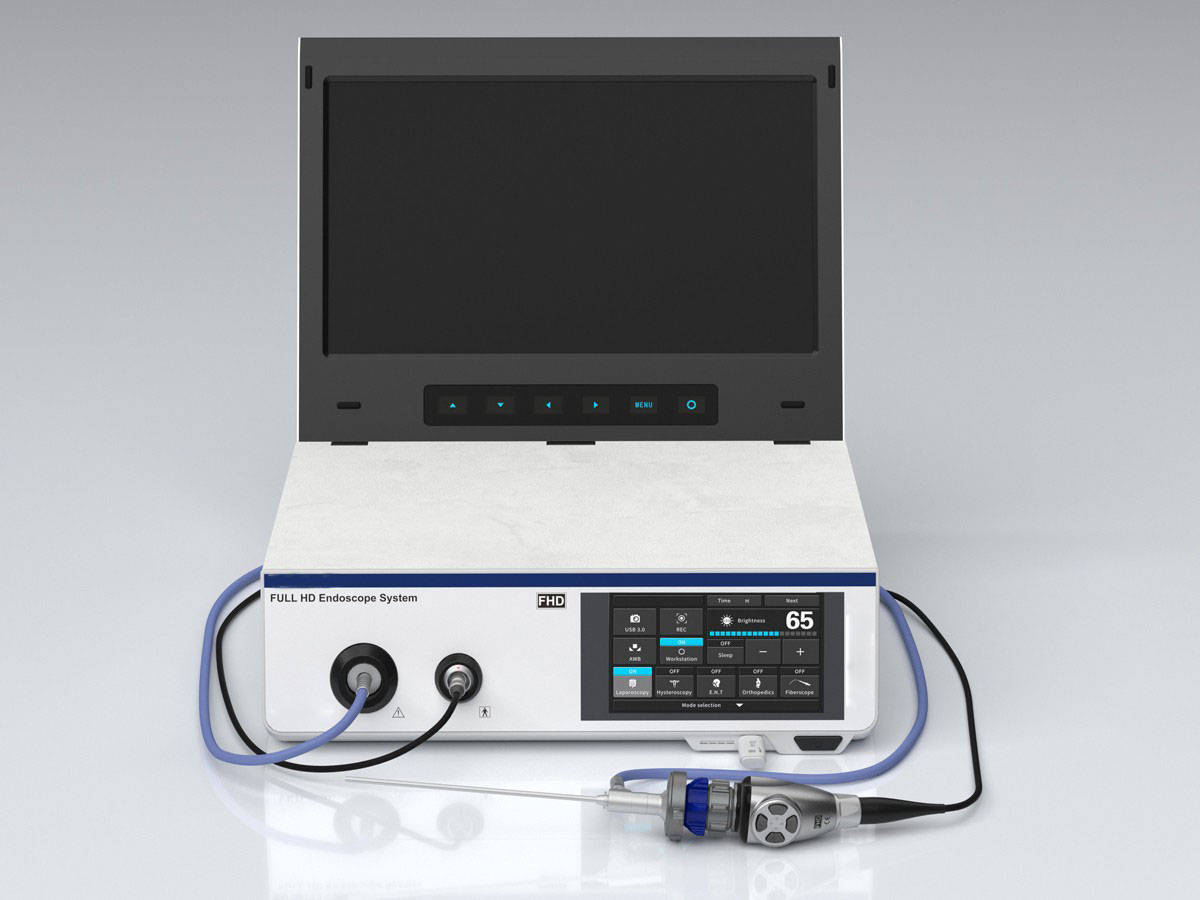의료용 내시경이란 무엇인가요?
지침:
의료 내시경은 진단 및 치료 의학 분야에 혁명을 일으켰습니다. 이 진료에 사용되는 도구인 내시경을 통해 의료진은 최소한의 침습으로 신체 내부를 관찰하고 치료할 수 있습니다. 이 가이드에서는 의료용 내시경의 정의, 종류, 용도 및 이점에 대해 자세히 설명합니다.
의료용 내시경의 이해:
의료용 내시경은 광원과 카메라가 장착된 연성 또는 경성 튜브입니다. 내시경은 체강이나 장기의 내부를 검사하는 데 사용됩니다. 내시경은 실시간 이미지를 모니터로 전송하여 의사가 표준 이미징 기술로 볼 수 없는 부위를 볼 수 있도록 합니다.
내시경의 구성 요소:
내시경은 의료 시술에 효과적인 몇 가지 주요 구성 요소로 이루어져 있습니다:
광원: 본체 내부에 조명을 제공합니다.
렌즈 시스템: 이미지를 캡처하고 전송합니다.
제어 섹션: 조작자가 내시경을 조작하고 기능을 제어할 수 있습니다.
-플렉시블 또는 리지드 튜브: 광원과 렌즈 시스템을 수용하고 구부려서 본체를 탐색할 수 있습니다.
의료용 내시경의 종류 :
특정 의료 용도에 맞게 설계된 내시경에는 다양한 유형이 있습니다. 내시경은 크게 연성 내시경과 경성 내시경으로 분류할 수 있습니다.

유연한 내시경
연성 내시경은 구부릴 수 있어 신체 내부의 구불구불하고 좁은 통로를 통과하는 데 이상적입니다. 일반적으로 다음과 같은 분야에서 사용됩니다:
위장 내시경 검사: 위내시경 또는 대장내시경을 사용하여 소화관을 검사합니다.
기관지 내시경 검사: 기도와 폐를 관찰합니다.
요도경 검사: 요로 검사: 요로를 검사합니다.
경성 내시경
경직성 내시경은 직선형이며 많은 조작이 필요하지 않은 부위를 검사하는 데 사용됩니다. 일반적으로 다음과 같은 분야에 사용됩니다:
관절경 검사: 무릎이나 어깨와 같은 관절을 검사합니다.
복강경 검사: 복부 수술에 사용됩니다.
방광경 검사: 방광을 검사합니다.
의료용 내시경의 용도
의료용 내시경은 다양한 진단 및 치료 분야에 사용됩니다. 최소 침습적 특성으로 인해 많은 시술에 선호됩니다.
진단 용도
내시경은 의사가 다양한 질환을 진단하는 데 매우 유용합니다:
질병 감지 종양, 궤양, 감염 등의 이상 징후를 식별합니다.
생검: 추가 분석을 위해 조직 샘플을 수집합니다.
상태 모니터링: 질병의 진행 상황과 치료의 효과를 추적합니다.
치료적 용도
내시경은 진단 외에도 다음과 같은 치료에도 사용됩니다:
수술: 최소 침습 수술을 수행하여 회복 시간과 위험을 줄입니다.
용종 제거: 결장에서 용종을 제거합니다.
결석 제거: 신장이나 담낭에서 결석을 제거합니다.
의료 내시경 검사의 이점
의료용 내시경을 사용하면 환자와 의료진 모두에게 많은 이점이 있습니다.
환자용
최소 침습: 내시경 시술은 절개 부위가 작아 통증이 적고 회복이 빠릅니다.
위험 감소: 기존 수술에 비해 감염 및 합병증 위험이 낮습니다.
병원 입원 기간 단축: 많은 내시경 시술이 외래에서 이루어지므로 환자는 당일 귀가할 수 있습니다.
의료 서비스 제공업체의 경우
향상된 시각화: 내부 구조를 선명하고 확대된 상태로 볼 수 있습니다.
정확성: 정확한 진단과 표적 치료가 가능합니다.
다용도성: 다양한 의료 분야 및 절차에 사용할 수 있습니다.
결론
의료용 내시경 는 진단과 치료 기능을 결합하여 현대 의학의 필수 요소로 자리 잡았습니다. 최소한의 침습으로 내부를 자세히 볼 수 있는 내시경의 능력은 환자 치료에 변화를 가져왔으며, 시술을 더 안전하고 효율적으로 만들었습니다. 기술이 계속 발전함에 따라 의학에서 내시경의 역할은 더욱 확대되어 환자와 의료 전문가 모두에게 더 많은 혜택을 제공할 것입니다.

댓글 남기기